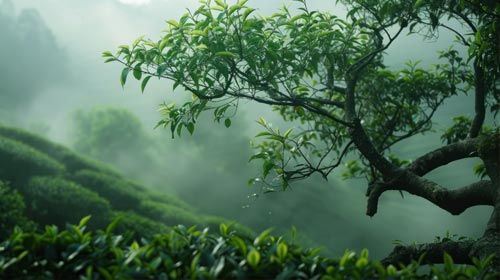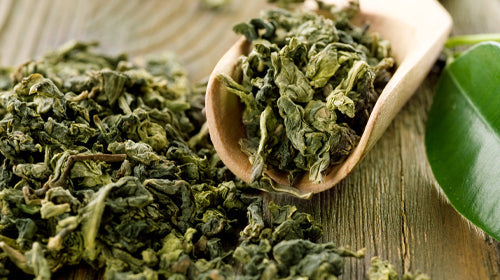Those who enjoy a cup of tea today rarely consider that this beverage has a history spanning thousands of years. Even more fascinating is that some of the oldest tea plants in the world are still alive today – and are even still harvested regularly. These ancient trees, known as **Ancient Tea Trees**, are far more than botanical curiosities: They are living witnesses to a deep-rooted tea culture that has been cultivated for generations.
What are Ancient Tea Trees?
The term "Ancient Tea Trees" describes wild-growing or traditionally cultivated tea trees of the species Camellia sinensis that are over a hundred, often over a thousand years old . They grow in remote, mountainous regions of Asia and thrive far from modern plantation farming—towering tall, deeply rooted, and closely connected to local communities. Unlike clipped shrubs in tea fields, these trees are allowed to retain their natural shape.
The result: unique, complex teas that are incomparable in aroma, structure, and depth. Picking is done selectively by hand, often only once a year, and is considered a cultural act—with respect for the tree and nature.
The most important regions of origin of the oldest tea trees in the world
Yunnan, China – The “Land of Origin of Tea”
Yunnan in southwest China is considered the cradle of the tea plant. In regions such as Xishuangbanna, Lincang, and Pu'er, ancient *Camellia sinensis var. assamica* trees can be found, some of which are over 1,000 years old . The most famous of these is the "Jinxiu Tea King" near Mengku—over 3,200 years old , according to research. These trees usually grow in forests or on steep mountain slopes and are tended and harvested by local peoples such as the Bulang or Hani.
Shan State, Myanmar – Wild tea trees in secret
Wild tea trees, estimated to be several hundred to over a thousand years old, still grow in Myanmar, particularly in Shan State. Tea culture there is closely intertwined with the Chinese Yunnan culture, but for a long time, it was barely documented. Today, the wild trees are being rediscovered and traditionally processed in small quantities – often to make pickle teas such as lahpet .
Northern Thailand – Ancient Assamica culture in the Golden Triangle
Ancient tea trees grow in the mountainous regions around Chiang Rai and Mae Salong , some of which were originally introduced from Yunnan or even represent their own genetic lineages. The *Assamica* trees cultivated here are still harvested today by Akha, Lisu, and Lahu tribes. Some of these trees are over 800 to 1,200 years old —passed down through oral tradition and tribal wisdom. Their teas are characterized by bold, deep flavors and a natural wildness that is particularly evident in fermented versions like Sheng Pu Erh .
Northern Vietnam – Tea trees from the Hoàng Liên Sơn Mountains
Vietnam also boasts impressive old trees—especially in the highlands around Ha Giang and Lao Cai . The "Shan Tuyet" teas there often come from trees that are several hundred to over 1,000 years old and grow wild or semi-wild in forested areas. Their name—Shan Tuyet—means "mountain snow" and refers to the white-haired buds that develop in the cool, humid mountain climate. These teas are rich in minerals and have a floral, resinous character .
Why these tea trees are more important than ever
Ancient Tea Trees are not only unique in taste – they are also genetically priceless . In times of monocultures, climate crisis, and variety loss, these ancient lines offer a valuable source of robust, adaptable plants.
For many indigenous communities, these trees are more than crops: they are spiritual beings, cultural heritage, and familial identity . Their care is not industrial, but rather a relationship—between people, nature, and history.
Growing Karma and the inspiration of Ancient Tea Trees
Even though our tea farm in Germany is still young, our philosophy and cultivation methods are based precisely on these models: diverse, resilient tea cultures that thrive without industrial intervention. In the future, we plan to cultivate genetically diverse mother plants, including assamica varieties originating in Yunnan and northern Thailand – for robust tea structures and genuine character, adapted to our local conditions.
A sip of history, a glimpse into the future
Ancient Tea Trees uniquely connect past, present, and future. They demonstrate how tea was originally intended—as a cultivated plant, not as a mass-produced commodity. Anyone who has ever tasted tea from a tree over 1,000 years old will see tea with different eyes.
At Growing Karma, we are inspired by this – for a new tea culture that focuses on origin, diversity, and respect.




Leave a comment
This site is protected by hCaptcha and the hCaptcha Privacy Policy and Terms of Service apply.